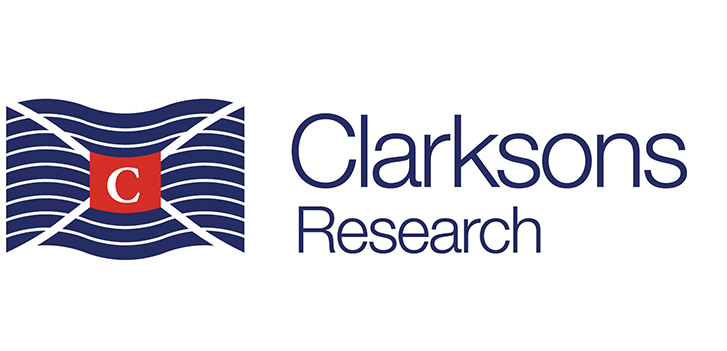
Clarksons Research have released their half year statistics on to Shipping Intelligence Network. Reviewing the data points (see below and
click here ) Steve Gordon, Managing Director of Clarksons research, commented:
Overall Index close to Record High …
·After the resilience and then strong recovery of recent years, it has been another exceptional half year for shipping with our cross-segment ClarkSea* for shipping cargo transportation averaging $38,844/day, up 7% on 2H 2021 and 157% on the 10-yr average.
·Although 1H was not quite a record half year for the ClarkSea Index (1H 2008: $39,129/day), markets remain in exceptional territory.
·With geopolitical turmoil added to Covid-19 disruption, shipping has again been placed at the centre of global events.
*the ClarkSea Index is a weighted average of ship earnings in $/day across the tanker, bulker, containership and gas carrier sectors segments that represent 80% of global shipping capacity.
Strong cashflow in most segments …
·Our overall index continues to be skewed by containers (freight was steady on 2H 2021at record levels, ship charter rates rose to another record $85,731/day: a strong short term outlook for freight / charter rates seems balanced by 8% fleet growth in 2023, a slowing economy and, eventually, an easing of congestion)
·Bulk Carriers have eased back ($24,440/day from $32,519 in the previous half) but still had their second best half since 2008 (world economy is a concern but a short orderbook and potential for some Chinese stimulus is more encouraging).
·Tankers, buoyed by a very strong performance on oil products but held back by VLCC, averaged $25,698, up from three consecutive quarters <$10,000 and reflecting disruption and changing trade patterns initiated by the Russia Ukraine conflict.
·Car Carriers (supported by congestion) have hit all time highs (end June: 1yr TC 6500 PCTC $62,500/day, almost three times the 10 year trend);
·LNG term rates are unsurprisingly above trend (the 1 yr Time Charter rate was up 49% on the 10-year trend), reflecting the role of LNG in energy transition and now in Energy Security with Europe moving to source increased LNG.
·Offshore oil and gas, reflecting encouraging trends / outlook in utilisation / day rates, also moved above trend.
Demand … macro-economic risks building but some mitigating factors
·As macro-economic headwinds and inflation pressures build, seaborne trade growth has slowed below trend and needs monitoring carefully (we are now projecting 12.2bn tonnes of seaborne trade in 2022, down from a 12.4bn forecast at start year).
·For shipping there are some mitigating factors: tonne-mile growth is still close to trend reflecting changing trade patterns and extra distance of European imports / Russian exports, congestion remains elevated tying up capacity (e.g. Containership port congestion globally remains elevated, with the total level of boxship capacity at port standing at 36.2% of the fleet at the end of June, above the year to date average of 35.7% and the 2016-19 average of 31.5%) and a complex sanction regime has created further “inefficiencies” across the shipping transportation system.
Supply… short orderbooks in tankers and bulkers, short term capacity dominated by containerships and LNG
·The global fleet grew below trend at 1.4% to reach 1.51bn GT / 2.2bn dwt (fleet value rose 10% to $1.4tr), continuing a theme of “manageable”, and, in some sectors, “favourable” supply.
·Structural opportunities from “short” orderbooks (tankers at 5% of fleet, bulkers 7%, and with container (28% of fleet capacity on order), LNG (40%) and PCC (12% – all dual-fuel) dominating much of the short term yard capacity.
·Of the $56bn of newbuild orders placed in 1H, we already have an annual record for LNG orders (94 ships, 16m cbm and $19.7bn).
·Overall newbuild ordering of 41m dwt was down 34% y-o-y but strong activity in containership, LNG and Car Carrier continued and prices rose 5% over the 1H.
·Overall shipyard output expected to increase from 2023, with a fifteen year low projected for 2022.
·S&P volumes (>71m dwt of $28bn) have remained strong, although were slowing a little as we head for the summer. Demolition activity was weak (just 8m dwt: the second lowest six month period since 2008).
Energy Transition And Energy Security in Focus
·Our reviews of recent years have all advised “extra classes” around Green Transition and Fuelling Transition as the shipping industry addresses its 2.4% contribution to global CO2 emissions. Re-enforcing this, a record 61% of newbuild orders (basis tonnage capacity) were alternative fuelled in the 1H and the introduction of new emissions regulation in the EEXI, CII and EU ETS is now six months away. Fleet renewal and impacts of emissions policies on fleet supply will be themes for the decade and provide wide ranging investment opportunities.
·But as we discussed in our LNG review, and as we are seeing with increased offshore oil and gas activity, energy security has also moved rapidly up the agenda.
·So strong cashflow in most segments but plenty of uncertainties to ponder: perhaps one for after the summer! Best wishes from Clarksons Research.
Clarksons Research are market leaders in the provision of independent data, intelligence and analysis around shipping, trade, offshore and maritime energy transition. Millions of data points are processed and analysed each day to provide trusted and insightful intelligence to thousands of organisations across maritime.
The opinions expressed herein are the author's and not necessarily those of The Xinde Marine News.
Please Contact Us at:
media@xindemarine.com


 Ningbo Containerized Freight Index Weekly Commentar
Ningbo Containerized Freight Index Weekly Commentar  Ningbo Containerized Freight Index Weekly Commentar
Ningbo Containerized Freight Index Weekly Commentar  Ningbo Containerized Freight Index Weekly Commentar
Ningbo Containerized Freight Index Weekly Commentar  BIMCO Shipping Number of the Week: Bulker newbuildi
BIMCO Shipping Number of the Week: Bulker newbuildi  Ningbo Containerized Freight Index Weekly Commentar
Ningbo Containerized Freight Index Weekly Commentar  Ningbo Containerized Freight Index Weekly Commentar
Ningbo Containerized Freight Index Weekly Commentar